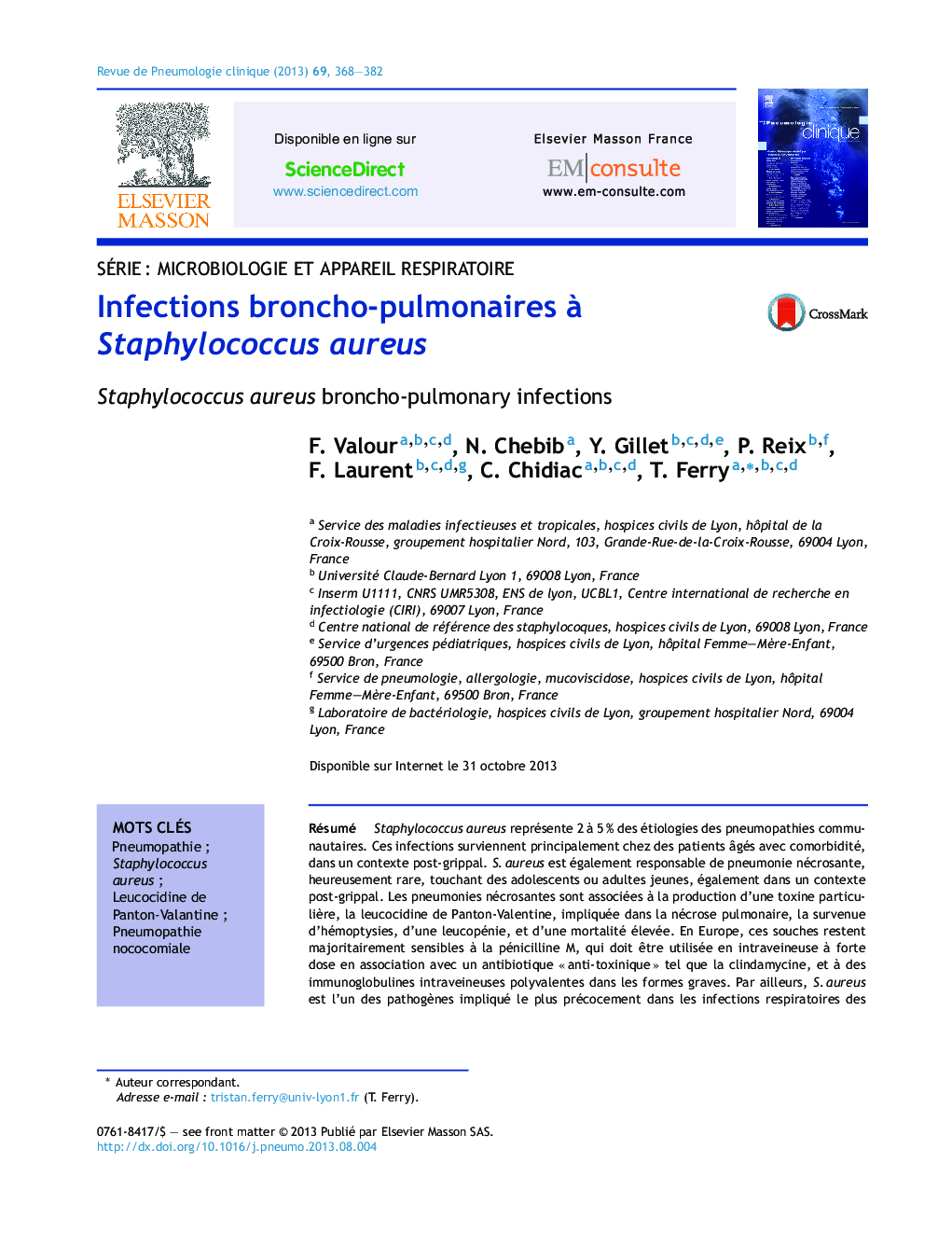| Article ID | Journal | Published Year | Pages | File Type |
|---|---|---|---|---|
| 3419586 | Revue de Pneumologie Clinique | 2013 | 15 Pages |
Abstract
Staphylococcus aureus accounts for 2-5% of the etiologies of community-acquired pneumonia. These infections occur mainly in elderly patients with comorbidity, after a respiratory viral infection. S. aureus could also be responsible for necrotizing pneumonia, which occurs in young subjects, also after flu. Necrotizing pneumonia are associated with the production of a particular staphylococcal toxin called Panton-Valentine leukocidin, responsible for pulmonary focal necrosis, occurrence haemoptysis, leucopenia, and death. In Europe, these strains are still predominantly sensitive to anti-staphylococcal penicillin, which must be used at high dosage intravenously in combination with an antibiotic that reduces toxin production such as clindamycin, and intravenous immunoglobulin in severe cases. The mortality rate is estimated at 50%. In addition, S. aureus is one of the pathogens involved in early respiratory infections in cystic fibrosis patients, in whom methicillin resistance plays an important prognostic role. However, the involvement of S. aureus in COPD exacerbations is rare. Finally, S. aureus represents 20 to 30% of cases of hospital-acquired pneumonia, including ventilator-associated pneumonia. In these cases, methicillin-resistance is common and requires the use of glycopeptides or linezolid. The place of new anti-staphylococcal antibiotics such as new generation cephalosporins or tigecyclin remains to be defined.
Related Topics
Health Sciences
Medicine and Dentistry
Infectious Diseases
Authors
F. Valour, N. Chebib, Y. Gillet, P. Reix, F. Laurent, C. Chidiac, T. Ferry,
